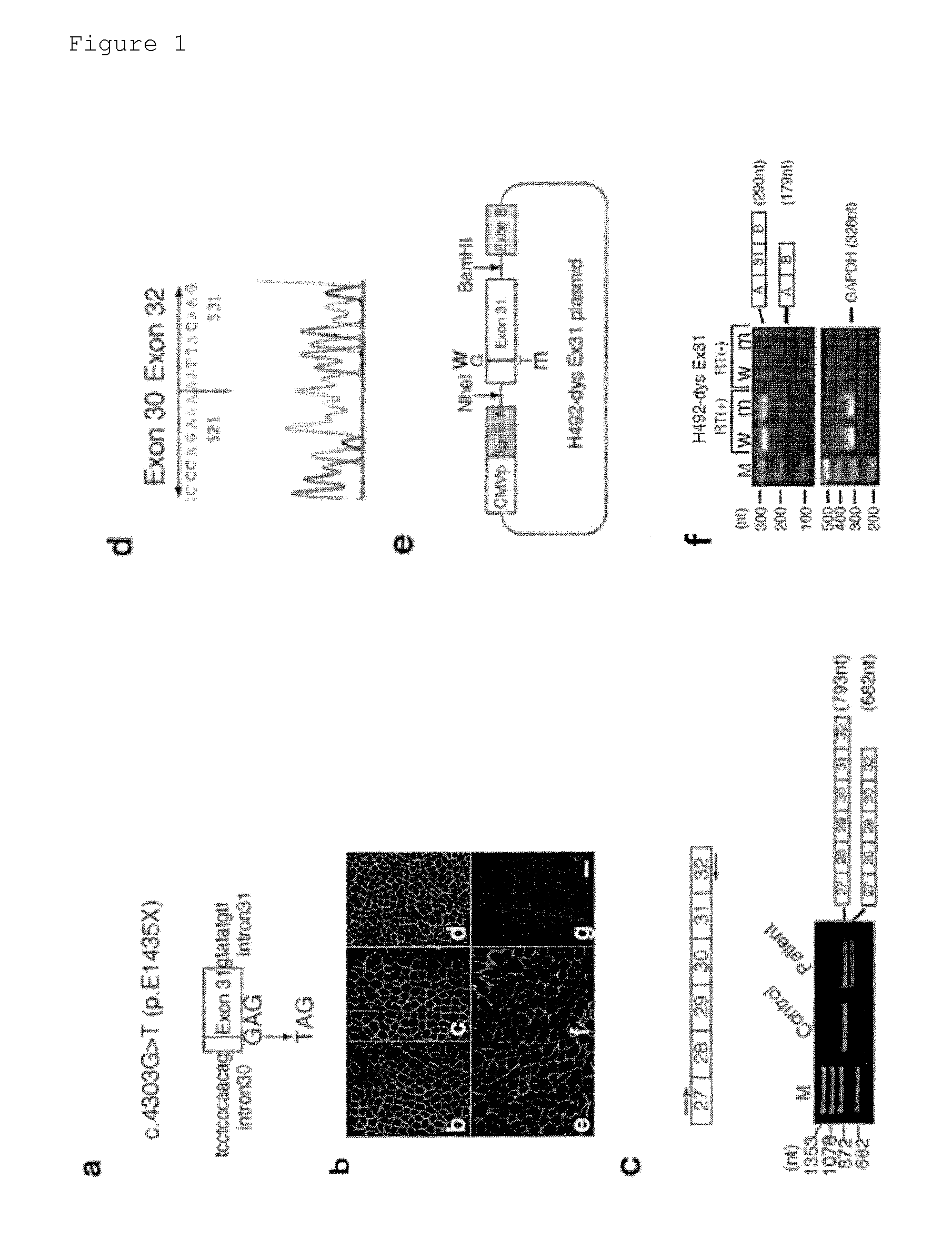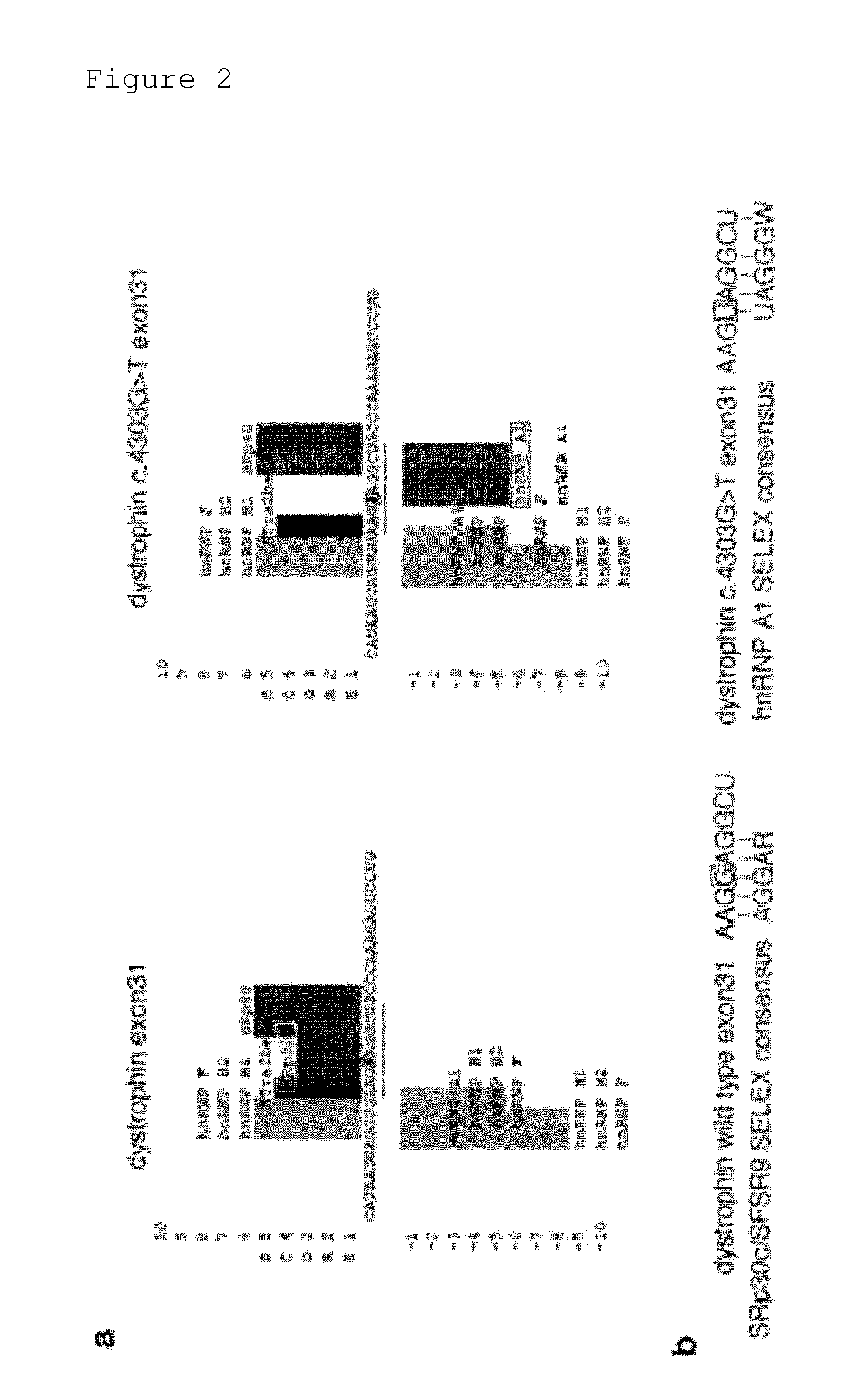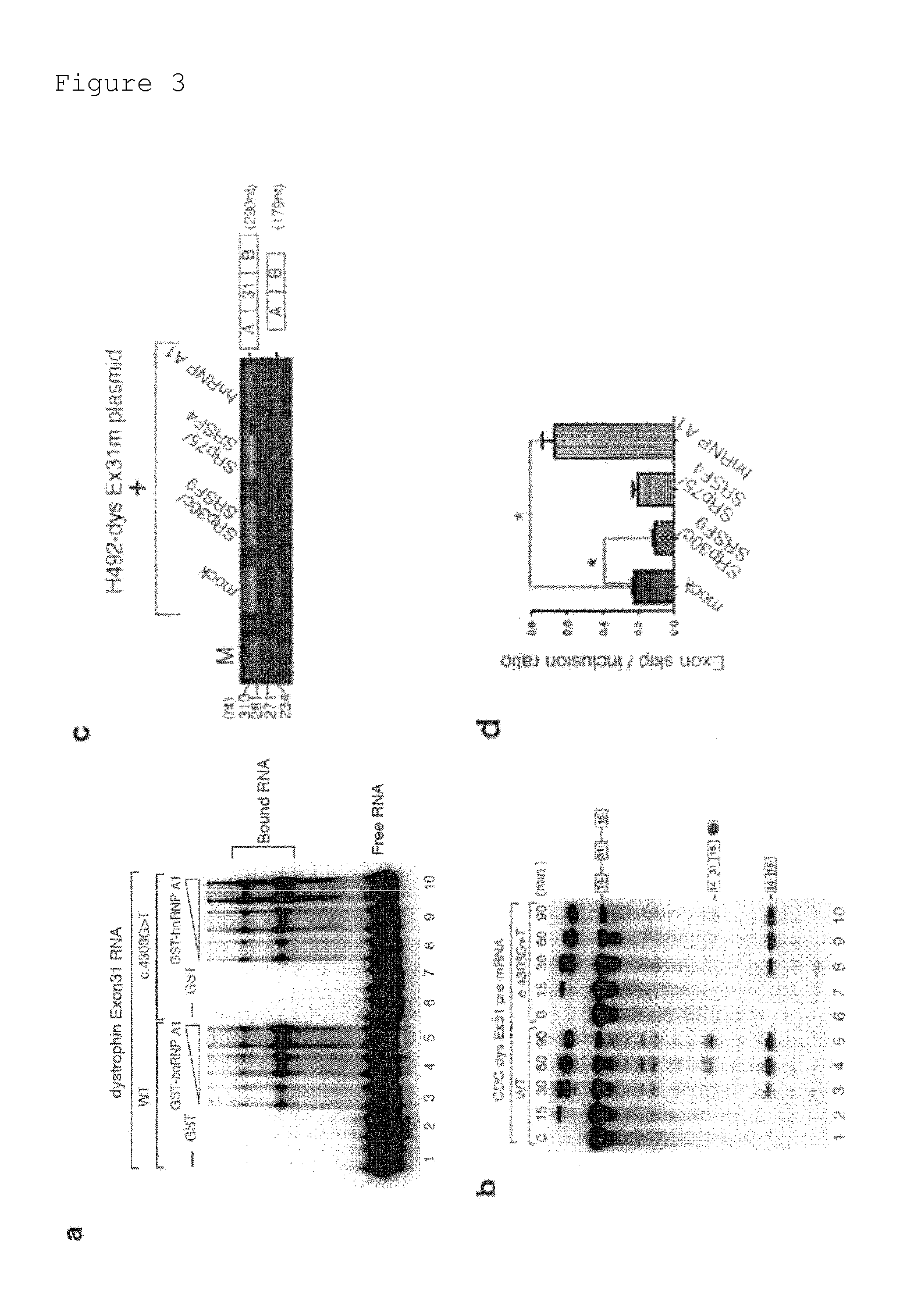Prophylactic or ameliorating agent for genetic diseases
a genetic disease and gene therapy technology, applied in the field of gene therapy or gene therapy, can solve the problems of accelerating muscle atrophy, impede the regeneration of muscle cells, and affecting the treatment effect of patients, and achieve the effects of preventing or ameliorating genetic diseases, enhancing expression of functional truncated proteins, and low molecule siz
- Summary
- Abstract
- Description
- Claims
- Application Information
AI Technical Summary
Benefits of technology
Problems solved by technology
Method used
Image
Examples
example 1
Mutation Analysis of Dystrophin Gene in Muscular Dystrophy Patient
[0053]More than 400 muscular dystrophy patients were analyzed for mutations in their dystrophin genes by a method shown below.
(Mutation Analysis)
[0054]DNA was isolated from the blood sample of each patient by the standard phenol-chloroform extraction method. Total RNA was isolated from peripheral lymphocytes collected from whole blood using the Ficoll-Paque density gradient method (manufactured by Amersham Biosciences AB) or isolated from a muscle section obtained by the slicing of a frozen muscle sample. Dystrophin mRNA expressed in skeletal muscle was analyzed by reverse-transcription PCR(RT-PCR) and RT-nested PCR. A region comprising exons 27 to 32 of the skeletal muscle-derived dystrophin mRNA was amplified using an internal primer set (forward c27f: CCTGTAGCACAAGAGGCCTTA (SEQ ID NO: 2) and reverse 2F: TCCACACTCTTTGTTTCCAATG (SEQ ID NO: 3)). This amplification product was purified and sequenced either directly or ...
example 2
Analysis of Splicing Regulator Involved in Exon 31 Splicing
[0067]The results of Example 1 demonstrated that the point mutation in exon 31 of the KUCG797 dystrophin gene caused exon skipping. Thus, an attempt was made to identify a candidate factor regulating the skipping or inclusion of exon 31.
(Sequence Analysis Based on SpliceAid Program)
[0068]The RNA sequences of wild-type exon 31 and mutant exon 31 of the dystrophin gene were analyzed using the SpliceAid program (http: / / www.introni.it / splicing.html) (Bioinformatics (2009) 25, 1211-1213). As a result, the point mutation in this mutant exon 31 was shown to reduce binding strength to SRp30c / SRSF9 (SFSR9), a member of the SR protein family (FIG. 2a). The SR protein is known to bind to an exonic splicing enhancer (ESE), which is often rich in purine. The sequence of exon 31 is highly analogous to a high-affinity binding sequence for SRp30c / SRSF9 identified by SELEX (FIG. 2b) (RNA (2007) 13, 1287-1300). The mutation in mutant exon 31 ...
example 3
Effect of TG003 on Skipping of Mutant Exon 31 in H492-dys Ex31 m / Hela
[0083]The present inventors searched for various low-molecular-weight compounds in order to find a low-molecular-weight compound capable of promoting the skipping of exon 31 of the dystrophin gene. As a typical example thereof, results about TG003 and SRPIN340 will be described below.
[0084]Both TG003 and SRPIN340 are known as low-molecular-weight compounds that influence alternative splicing. SRPIN340 is a specific inhibitor for SR protein kinase (SRPK) (Proc Natl Acad Sci USA (2006) 103, 11329-11333) and can regulate alternative splicing, probably through the inhibition of the SRPK-mediated phosphorylation of the SR protein (Biochem J (2009) 417, 15-27; and Genome Biol (2009) 10, 242). The other compound designated as TG003 is a Clk kinase inhibitor. TG003 has also been shown to influence the alternative splicing of adenovirus E1A, SC35, and Clk itself (non-patent documents 12 and 13).
(Cell-Based Analysis of Splic...
PUM
| Property | Measurement | Unit |
|---|---|---|
| body weight | aaaaa | aaaaa |
| body weight | aaaaa | aaaaa |
| body weight | aaaaa | aaaaa |
Abstract
Description
Claims
Application Information
 Login to View More
Login to View More - R&D
- Intellectual Property
- Life Sciences
- Materials
- Tech Scout
- Unparalleled Data Quality
- Higher Quality Content
- 60% Fewer Hallucinations
Browse by: Latest US Patents, China's latest patents, Technical Efficacy Thesaurus, Application Domain, Technology Topic, Popular Technical Reports.
© 2025 PatSnap. All rights reserved.Legal|Privacy policy|Modern Slavery Act Transparency Statement|Sitemap|About US| Contact US: help@patsnap.com



